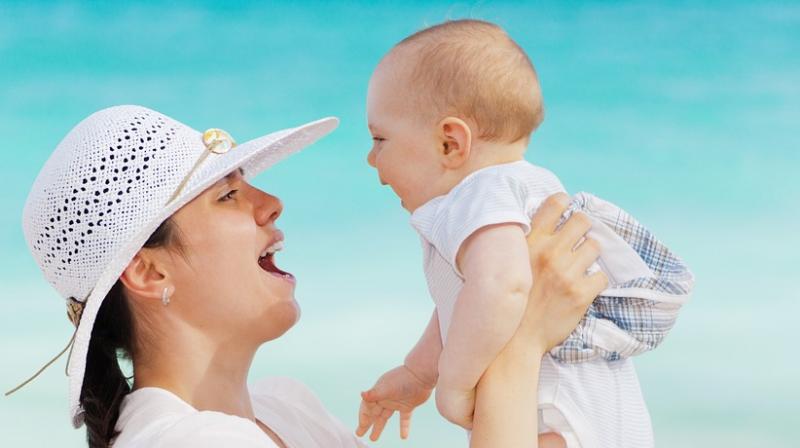Eye contact with your baby helps synchronise your brainwaves: Study
The brainwaves reflect the group-level activity of millions of neurons and are involved in information transfer between brain regions.

Washington: Dear mothers, making eye contact with your babies can synchronise brainwaves with them, which in turn makes them learn and communicate more easily, finds a recent study.
Researchers from the University of Cambridge in England explained the brainwaves reflect the group-level activity of millions of neurons and are involved in information transfer between brain regions. The findings suggested eye gaze and vocalisations may both, somehow, play a role.
The team examined the brainwave patterns of 36 infants (17 in the first experiment and 19 in the second) using electroencephalography (EEG), which measures patterns of brain electrical activity via electrodes in a skull cap worn by the participants.
They compared the babies' brain activity to that of the adult, who was singing nursery rhymes to the infant. In the first of two experiments, the baby watched a video of an adult as she sang nursery rhymes.
First, the adult - whose brainwave patterns had already been recorded - was looking directly at the infant. Then, she turned her head to avert her gaze, while still singing nursery rhymes. Finally, she turned her head away, but her eyes looked directly back at the infant. The findings indicated that babies' brainwaves were more synchronised to the adults' - when the adult's gaze met the baby's - as compared to when her gaze was averted.
The greatest synchronising effect occurred when the adults' head was turned away but her eyes still looked directly at the baby. The researchers explained that this happened because such a gaze appeared highly deliberate, and so provided a stronger signal to the infant that the adult intended to communicate with her.
In the second experiment, a real adult replaced the video. She only looked either directly at the baby or averted her gaze while singing nursery rhymes. The researchers noted that brainwave synchronisation was not just due to seeing a face or finding something interesting, but about sharing an intention to communicate.
Lead author Dr Victoria Leong said, "When the adult and infant are looking at each other, they are signalling their availability and intention to communicate with each other."
"We found that both adult and infant brains respond to a gaze signal by becoming more in sync with their partner. This mechanism could prepare parents and babies to communicate, by synchronising when to speak and when to listen, which would also make learning more effective," Leong added.
The results are published in the Proceedings of National Academy of Sciences journal.

